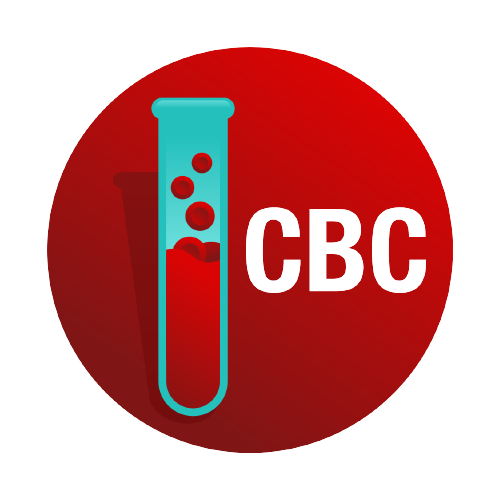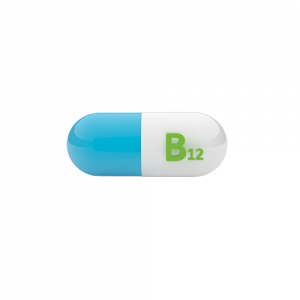Complete Blood Count (CBC)
$79.00
CBC stands for Complete Blood Count, which is a common blood test that measures the different cells in the blood, including red blood cells, white blood cells, and platelets. It is often used as a routine screening test to assess overall health, detect potential health conditions, including anemia, infections, and blood disorders, and is also used to monitor the effectiveness of treatments.
Description
About the Test
A complete blood count (CBC) is a blood test that measures the different cells in the blood, including red blood cells, white blood cells, and platelets. The CBC provides important information about a person’s overall health and can help diagnose a variety of medical conditions, including anemia, infections, and blood disorders.
A healthcare provider can interpret the results of a CBC and make recommendations for treatment or lifestyle changes as needed. The normal range for the results of a CBC may vary depending on the laboratory that performs the test. It is important to keep in mind that the results of a CBC can be influenced by factors such as age, gender, and overall health.
Overview of Complete Blood Count Blood Test
A complete blood count (CBC) is a blood test that measures the different cells in the blood, including red blood cells, white blood cells, and platelets. The CBC provides important information about a person’s overall health and can help diagnose a variety of medical conditions, including anemia, infections, and blood disorders.
The following components of the blood are measured during a CBC:
- Red blood cells (RBCs) – measure the number and size of red blood cells, which carry oxygen to the body’s tissues.
- Hemoglobin – measures the amount of oxygen-carrying protein in the blood.
- Hematocrit – measures the proportion of red blood cells to the total volume of blood.
- Mean corpuscular volume (MCV) – measures the average size of red blood cells.
- Mean corpuscular hemoglobin (MCH) – measures the average amount of hemoglobin in red blood cells.
- Mean corpuscular hemoglobin concentration (MCHC) – measures the average concentration of hemoglobin in red blood cells.
- Red Blood Cell Distribution Width (RDW) is a blood test that measures the variation in size and shape of red blood cells.
- Red Blood Cell Distribution Width-Standard Deviation (RDW-SD) is a blood test that measures the variation in size and shape of red blood cells, with a focus on the degree of variation in width.
- Mean Platelet Volume (MPV) is a blood test that measures the average size of platelets in the blood.
- Platelets – measure the number of small cells that help blood to clot.
- White blood cells (WBCs) – measure the number of different types of white blood cells, which play a role in fighting infections.
- Lymphocytes % is a blood test that measures the percentage of lymphocytes, a type of white blood cell, in the blood.
- Monocytes % is a blood test that measures the percentage of monocytes, a type of white blood cell, in the blood.
- Neutrophils % is a blood test that measures the percentage of neutrophils, a type of white blood cell, in the blood.
- Eosinophils % is a blood test that measures the percentage of eosinophils, a type of white blood cell, in the blood. Eosinophils play a key role in the immune system’s response to parasitic infections and allergic reactions.
- Basophils % is a blood test that measures the percentage of basophils, a type of white blood cell, in the blood. Basophils play a role in the immune system’s response to allergies and parasitic infections.
- Lymphocytes # is a blood test that measures the absolute number of lymphocytes, a type of white blood cell, in the blood.
- Monocytes # is a blood test that measures the absolute number of monocytes, a type of white blood cell, in the blood.
- Neutrophils # is a blood test that measures the absolute number of neutrophils, a type of white blood cell, in the blood.
- Eosinophils # is a blood test that measures the absolute number of eosinophils, a type of white blood cell, in the blood.
- Basophils # is a blood test that measures the absolute number of basophils, a type of white blood cell, in the blood.
A healthcare provider can interpret the results of a CBC and make recommendations for treatment or lifestyle changes as needed. The normal range for the results of a CBC may vary depending on the laboratory that performs the test. It is important to keep in mind that the results of a CBC can be influenced by factors such as age, gender, and overall health.
Analytes In The CBC Blood Test
21 Parameters
- Red Blood Cells
- Hemoglobin (Hb)
- Hematocrit (Hct)
- Mean Corpuscular Volume (MCV)
- Mean Corpuscular Hemoglobin (MCH)
- Mean Corpuscular Hemoglobin Concentration (MCHC)
- Red Blood Cell Distribution Width
- Red Blood Cell Distribution Width-Standard Deviation
- Platelets (Plt)
- Mean Platelet Volume
-
White Blood Cells
-
Lymphocytes %
-
Monocytes %
-
Neutrophils %
-
Eosinophils %
-
Basophils %
-
Lymphocytes #
-
Monocytes #
-
Neutrophils #
-
Eosinophils #
-
Basophils #
Red Blood Cells (RBCs)
Red blood cells (RBCs) are the most abundant type of blood cell and play a critical role in transporting oxygen from the lungs to the body’s tissues. RBCs are biconcave disks that are flexible, allowing them to squeeze through even the smallest blood vessels.
The following components of RBCs are measured during a complete blood count (CBC) blood test:
- RBC count – measures the number of RBCs in the blood.
- Hemoglobin – measures the amount of oxygen-carrying protein in the blood.
- Hematocrit – measures the proportion of RBCs to the total volume of blood.
- Mean corpuscular volume (MCV) – measures the average size of RBCs.
- Mean corpuscular hemoglobin (MCH) – measures the average amount of hemoglobin in RBCs.
- Mean corpuscular hemoglobin concentration (MCHC) – measures the average concentration of hemoglobin in RBCs.
Abnormal results for RBC components may indicate conditions such as anemia, polycythemia, or other blood disorders. A healthcare provider can interpret the results of a CBC and make recommendations for treatment or lifestyle changes as needed. The normal range for the results of a CBC may vary depending on the laboratory that performs the test. It is important to keep in mind that the results of a CBC can be influenced by factors such as age, gender, and overall health.
Hemoglobin (Hb)
Hemoglobin (Hb) is a protein found in red blood cells that carries oxygen from the lungs to the body’s tissues and carries carbon dioxide from the tissues to the lungs to be exhaled. Hemoglobin is made up of four protein molecules (globulin chains) bound together.
In a complete blood count (CBC) test, hemoglobin levels are measured in order to evaluate the amount of oxygen-carrying protein in the blood. Abnormal levels of hemoglobin can indicate conditions such as anemia, polycythemia, or other blood disorders.
A healthcare provider can interpret the results of a CBC and make recommendations for treatment or lifestyle changes as needed. The normal range for hemoglobin levels may vary depending on the laboratory that performs the test. It is important to keep in mind that the results of a CBC can be influenced by factors such as age, gender, and overall health.
Hematocrit (Hct)
Hematocrit (Hct) is a measurement of the proportion of red blood cells (RBCs) to the total volume of blood. It is expressed as a percentage and is used as an indicator of an individual’s overall red blood cell mass.
In a complete blood count (CBC) blood test, the hematocrit level is measured by spinning a sample of blood in a centrifuge to separate the red blood cells from the other components of blood, such as plasma and white blood cells. The volume of red blood cells is then measured and expressed as a percentage of the total blood volume.
Abnormal hematocrit levels can indicate conditions such as anemia, polycythemia, or other blood disorders. A healthcare provider can interpret the results of a CBC and make recommendations for treatment or lifestyle changes as needed. The normal range for hematocrit levels may vary depending on the laboratory that performs the test. It is important to keep in mind that the results of a CBC can be influenced by factors such as age, gender, and overall health.
Mean Corpuscular Volume (MCV)
Mean Corpuscular Volume (MCV) is a measurement of the average size of individual red blood cells (RBCs) in a sample of blood. It is expressed in femtoliters (fl) and provides important information about the overall health of red blood cells.
In a complete blood count (CBC) test, the MCV level is calculated as part of the analysis of red blood cell indices, which includes MCV, Mean Corpuscular Hemoglobin (MCH), and Mean Corpuscular Hemoglobin Concentration (MCHC). The MCV is calculated by dividing the total volume of red blood cells by the number of red blood cells.
Abnormal MCV levels can indicate various conditions, such as anemia, macrocytosis, or microcytosis. A healthcare provider can interpret the results of a CBC and make recommendations for treatment or lifestyle changes as needed. The normal range for MCV levels may vary depending on the laboratory that performs the test. It is important to keep in mind that the results of a CBC can be influenced by factors such as age, gender, and overall health.
Mean Corpuscular Hemoglobin (MCH)
Mean Corpuscular Hemoglobin (MCH) is a measurement of the average amount of hemoglobin contained in an individual red blood cell (RBC) in a sample of blood. It is expressed in picograms (pg) and provides important information about the overall health of red blood cells.
In a complete blood count (CBC) test, the MCH level is calculated as part of the analysis of red blood cell indices, which includes Mean Corpuscular Volume (MCV), MCH, and Mean Corpuscular Hemoglobin Concentration (MCHC). The MCH is calculated by dividing the total amount of hemoglobin in red blood cells by the number of red blood cells.
Abnormal MCH levels can indicate various conditions, such as anemia or macrocytosis. A healthcare provider can interpret the results of a CBC and make recommendations for treatment or lifestyle changes as needed. The normal range for MCH levels may vary depending on the laboratory that performs the test. It is important to keep in mind that the results of a CBC can be influenced by factors such as age, gender, and overall health.
Mean Corpuscular Hemoglobin Concentration (MCHC)
Mean Corpuscular Hemoglobin Concentration (MCHC) is a measurement of the average concentration of hemoglobin in an individual red blood cell (RBC) in a sample of blood. It is expressed in grams per deciliter (g/dL) and provides important information about the overall health of red blood cells.
In a complete blood count (CBC) test, the MCHC level is calculated as part of the analysis of red blood cell indices, which includes Mean Corpuscular Volume (MCV), Mean Corpuscular Hemoglobin (MCH), and MCHC. The MCHC is calculated by dividing the total amount of hemoglobin in red blood cells by the total volume of red blood cells.
Abnormal MCHC levels can indicate various conditions, such as anemia or abnormal RBC shape. A healthcare provider can interpret the results of a CBC and make recommendations for treatment or lifestyle changes as needed. The normal range for MCHC levels may vary depending on the laboratory that performs the test. It is important to keep in mind that the results of a CBC can be influenced by factors such as age, gender, and overall health.
Red Blood Cell Distribution Width (RDW)
Red Blood Cell Distribution Width (RDW) is a blood test that measures the variation in size and shape of red blood cells. The test is often used as part of a complete blood count (CBC) to help diagnose and monitor certain medical conditions, including anemia, liver disease, and vitamin deficiencies. An elevated RDW may indicate anemia or other underlying health problems, while a normal RDW may suggest normal red blood cell size and shape. However, interpreting RDW test results can be complex, and healthcare providers may use additional tests and clinical evaluation to make a diagnosis and determine appropriate treatment. It’s important to talk to a healthcare provider about any concerns related to RDW or other blood test results.
Red Blood Cell Distribution Width-Standard D(RDW-SD)eviation
Red Blood Cell Distribution Width-Standard Deviation (RDW-SD) is a blood test that measures the variation in size and shape of red blood cells, with a focus on the degree of variation in width. RDW-SD is one of several parameters used to assess red blood cell distribution width, with the other parameter being RDW-CV (coefficient of variation). RDW-SD may be used in combination with other blood tests, such as a complete blood count (CBC), to help diagnose and monitor certain medical conditions, including anemia and liver disease. An elevated RDW-SD may indicate an increased variation in red blood cell size and shape, which can be a sign of underlying health problems. However, interpreting RDW-SD test results can be complex, and healthcare providers may use additional tests and clinical evaluation to make a diagnosis and determine appropriate treatment. It’s important to talk to a healthcare provider about any concerns related to RDW-SD or other blood test results.
Mean Platelet Volume (MPV)
Mean Platelet Volume (MPV) is a blood test that measures the average size of platelets in the blood. Platelets are small cell fragments in the blood that help with blood clotting and wound healing. MPV is often used as part of a complete blood count (CBC) to help diagnose and monitor certain medical conditions, such as bleeding disorders, thrombocytopenia (low platelet count), and cardiovascular disease. An elevated MPV may indicate an increased risk of clotting or bleeding, while a low MPV may suggest decreased platelet production or other underlying health problems. However, interpreting MPV test results can be complex, and healthcare providers may use additional tests and clinical evaluation to make a diagnosis and determine appropriate treatment. It’s important to talk to a healthcare provider about any concerns related to MPV or other blood test results.
Platelets (Plt)
Platelets, also known as thrombocytes, are a type of blood cell that play an important role in blood clotting. They help to prevent excessive bleeding by clumping together at the site of an injury and forming a clot.
In a complete blood count (CBC) test, the number of platelets in a sample of blood is counted and reported as the Platelet (Plt) count. The normal range for Platelet count may vary depending on the laboratory that performs the test, but it typically falls between 150,000 and 450,000 cells per microliter of blood.
Abnormal Platelet counts can indicate various conditions, such as thrombocytopenia (low Platelet count), thrombocytosis (high Platelet count), or other disorders that affect the body’s blood clotting ability. A healthcare provider can interpret the results of a CBC and make recommendations for treatment or lifestyle changes as needed. It is important to keep in mind that the results of a CBC can be influenced by factors such as age, gender, and overall health.
White Blood Cells (WBCs)
White Blood Cells (WBCs), also known as leukocytes, are a type of blood cell that play a crucial role in the body’s immune system. They help fight against infections, diseases, and other foreign invaders by attacking and destroying harmful substances in the body.
In a complete blood count (CBC) test, the number of white blood cells in a sample of blood is counted and reported as the WBC count. The normal range for WBC count may vary depending on the laboratory that performs the test, but it typically falls between 4,500 and 11,000 cells per microliter of blood.
Abnormal WBC counts can indicate various conditions, such as infections, inflammation, leukemia, or other diseases that affect the body’s immune system. A healthcare provider can interpret the results of a CBC and make recommendations for treatment or lifestyle changes as needed. It is important to keep in mind that the results of a CBC can be influenced by factors such as age, gender, and overall health.
Lymphocytes %
Lymphocytes % is a blood test that measures the percentage of lymphocytes, a type of white blood cell, in the blood. Lymphocytes are a key component of the immune system and play a critical role in fighting off infections and other diseases. The percentage of lymphocytes in the blood can be influenced by a variety of factors, including age, infections, autoimmune disorders, and certain medications. An elevated lymphocytes % may indicate an active infection or other inflammatory condition, while a low lymphocytes % may suggest immunosuppression or certain viral infections. However, interpreting lymphocytes % test results can be complex, and healthcare providers may use additional tests and clinical evaluation to make a diagnosis and determine appropriate treatment. It’s important to talk to a healthcare provider about any concerns related to lymphocytes % or other blood test results.
Monocytes %
Monocytes % is a blood test that measures the percentage of monocytes, a type of white blood cell, in the blood. Monocytes are a key component of the immune system and play a critical role in fighting off infections and other diseases. The percentage of monocytes in the blood can be influenced by a variety of factors, including infections, autoimmune disorders, and certain medications. An elevated monocytes % may indicate an active infection or other inflammatory condition, while a low monocytes % is less common and may be associated with certain medical conditions or treatments. However, interpreting monocytes % test results can be complex, and healthcare providers may use additional tests and clinical evaluation to make a diagnosis and determine appropriate treatment. It’s important to talk to a healthcare provider about any concerns related to monocytes % or other blood test results.
Neutrophils %
Neutrophils % is a blood test that measures the percentage of neutrophils, a type of white blood cell, in the blood. Neutrophils are a critical component of the immune system and play a key role in fighting off bacterial and fungal infections. The percentage of neutrophils in the blood can be influenced by a variety of factors, including infections, inflammation, stress, and certain medications. An elevated neutrophils % may indicate an active infection or other inflammatory condition, while a low neutrophils % may suggest immunosuppression or certain viral infections. However, interpreting neutrophils % test results can be complex, and healthcare providers may use additional tests and clinical evaluation to make a diagnosis and determine appropriate treatment. It’s important to talk to a healthcare provider about any concerns related to neutrophils % or other blood test results.
Eosinophils %
Eosinophils % is a blood test that measures the percentage of eosinophils, a type of white blood cell, in the blood. Eosinophils play a key role in the immune system’s response to parasitic infections and allergic reactions. The percentage of eosinophils in the blood can be influenced by a variety of factors, including allergies, parasitic infections, autoimmune disorders, and certain medications. An elevated eosinophils % may indicate an allergic reaction, a parasitic infection, or other inflammatory conditions, while a low eosinophils % is less common and may be associated with certain medical conditions or treatments. However, interpreting eosinophils % test results can be complex, and healthcare providers may use additional tests and clinical evaluation to make a diagnosis and determine appropriate treatment. It’s important to talk to a healthcare provider about any concerns related to eosinophils % or other blood test results.
Basophils %
Basophils % is a blood test that measures the percentage of basophils, a type of white blood cell, in the blood. Basophils play a role in the immune system’s response to allergies and parasitic infections. The percentage of basophils in the blood can be influenced by a variety of factors, including allergies, infections, autoimmune disorders, and certain medications. An elevated basophils % may indicate an allergic reaction or other inflammatory condition, while a low basophils % is less common and may be associated with certain medical conditions or treatments. However, interpreting basophils % test results can be complex, and healthcare providers may use additional tests and clinical evaluation to make a diagnosis and determine appropriate treatment. It’s important to talk to a healthcare provider about any concerns related to basophils % or other blood test results.
Lymphocytes #
Lymphocytes # is a blood test that measures the absolute number of lymphocytes, a type of white blood cell, in the blood. Lymphocytes are a key component of the immune system and play a critical role in fighting off infections and other diseases. The absolute number of lymphocytes in the blood can be influenced by a variety of factors, including age, infections, autoimmune disorders, and certain medications. An elevated lymphocytes # may indicate an active infection or other inflammatory condition, while a low lymphocytes # may suggest immunosuppression or certain viral infections. However, interpreting lymphocytes # test results can be complex, and healthcare providers may use additional tests and clinical evaluation to make a diagnosis and determine appropriate treatment. It’s important to talk to a healthcare provider about any concerns related to lymphocytes # or other blood test results.
Monocytes #
Monocytes # is a blood test that measures the absolute number of monocytes, a type of white blood cell, in the blood. Monocytes are a key component of the immune system and play a critical role in fighting off infections and other diseases. The absolute number of monocytes in the blood can be influenced by a variety of factors, including infections, autoimmune disorders, and certain medications. An elevated monocytes # may indicate an active infection or other inflammatory condition, while a low monocytes # is less common and may be associated with certain medical conditions or treatments. However, interpreting monocytes # test results can be complex, and healthcare providers may use additional tests and clinical evaluation to make a diagnosis and determine appropriate treatment. It’s important to talk to a healthcare provider about any concerns related to monocytes # or other blood test results.
Neutrophils #
Neutrophils # is a blood test that measures the absolute number of neutrophils, a type of white blood cell, in the blood. Neutrophils are a critical component of the immune system and play a key role in fighting off bacterial and fungal infections. The absolute number of neutrophils in the blood can be influenced by a variety of factors, including infections, inflammation, stress, and certain medications. An elevated neutrophils # may indicate an active infection or other inflammatory condition, while a low neutrophils # may suggest immunosuppression or certain viral infections. However, interpreting neutrophils # test results can be complex, and healthcare providers may use additional tests and clinical evaluation to make a diagnosis and determine appropriate treatment. It’s important to talk to a healthcare provider about any concerns related to neutrophils # or other blood test results.
Eosinophils #
Eosinophils # is a blood test that measures the absolute number of eosinophils, a type of white blood cell, in the blood. Eosinophils play a key role in the immune system’s response to parasitic infections and allergic reactions. The absolute number of eosinophils in the blood can be influenced by a variety of factors, including allergies, parasitic infections, autoimmune disorders, and certain medications. An elevated eosinophils # may indicate an allergic reaction, a parasitic infection, or other inflammatory conditions, while a low eosinophils # is less common and may be associated with certain medical conditions or treatments. However, interpreting eosinophils # test results can be complex, and healthcare providers may use additional tests and clinical evaluation to make a diagnosis and determine appropriate treatment. It’s important to talk to a healthcare provider about any concerns related to eosinophils # or other blood test results.
Basophils #
Basophils # is a blood test that measures the absolute number of basophils, a type of white blood cell, in the blood. Basophils play a role in the immune system’s response to allergies and parasitic infections. The absolute number of basophils in the blood can be influenced by a variety of factors, including allergies, infections, autoimmune disorders, and certain medications. An elevated basophils # may indicate an allergic reaction or other inflammatory condition, while a low basophils # is less common and may be associated with certain medical conditions or treatments. However, interpreting basophils # test results can be complex, and healthcare providers may use additional tests and clinical evaluation to make a diagnosis and determine appropriate treatment. It’s important to talk to a healthcare provider about any concerns related to basophils # or other blood test results.
Lab Method
5-part differential with sophisticated flow cytometry with proprietary dynamic gating technology that reduces flagging by 40% compared to static gating.
The sophisticated gating technology in the DxH 560 improves the identification of white blood cells (WBC) populations by automatically adjusting the thresholds between cell-cluster arrangements. More reportable results are seen with more challenging cell populations, such as lymphocytes and eosinophils, giving a more accurate 5-part leukocyte differential than static gating.
Specimen Requirements
Lavender top tube – EDTA, whole blood
Turn Around Time
2 to 24 hours
Price For Test
Price: $79







